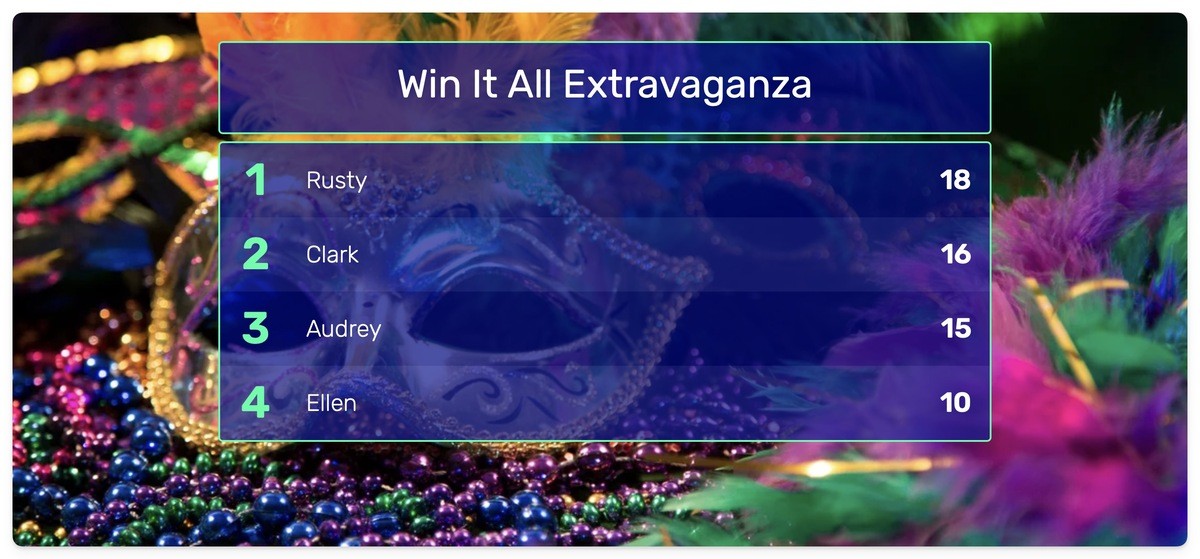You check your phone. Your daily step count just passed your friend’s. A small surge of satisfaction washes over you. You decide to take the stairs instead of the elevator—just 500 more steps to claim first place.
This scenario plays out millions of times daily across fitness apps, video games, workplace platforms, and educational software. But why does seeing your name climb a digital ranking trigger such a powerful response? Why do we care so deeply about our position relative to others, even in contexts that “don’t matter”?
The answer lies deep in our evolutionary psychology, neurochemistry, and social nature. Leaderboards don’t just display data—they hack our brains in ways that can transform behavior, for better or worse.

The Evolutionary Roots of Competition
Status: The Ultimate Survival Tool
Picture our ancestors 50,000 years ago, huddled around a fire after a successful hunt. Who gets the choicest cut of meat? Who sits closest to the warmth? Who speaks first when decisions need making? The answer was never random—it followed an invisible but universally understood hierarchy that could mean the difference between thriving and starving, between reproducing and genetic extinction.
Social status in prehistoric times wasn’t abstract or optional; it was the operating system of survival. Higher-ranking individuals didn’t just eat better and live longer—they passed on their genes more successfully. The ability to accurately perceive one’s place in the hierarchy, to recognize opportunities for advancement, and to compete effectively for position became hardwired into our neural architecture through millions of iterations of natural selection. Those who couldn’t play the status game disappeared from the gene pool.
Here’s the remarkable part: your brain, sculpted by eons of evolution, cannot distinguish between competing for mammoth meat and competing for the top spot on your company’s sales leaderboard. When you see your name rise from fifth to fourth place, the same ancient circuits fire that once signaled improved access to resources and mates. The dopamine hit you get from passing a colleague’s monthly numbers triggers identical pathways that rewarded your ancestors for establishing dominance. Modern leaderboards don’t create our competitive nature—they reveal and exploit instincts older than civilization itself.
The Hierarchy Detection System
Humans possess what researchers call a “sociometer”—an internal gauge constantly monitoring our social standing. This system:
- Operates largely below conscious awareness
- Triggers emotional responses to status changes
- Influences behavior automatically
- Affects physical health and stress hormones
Studies show that people can assess social hierarchies within milliseconds of entering a room. We’re literally wired to notice and care about rankings. Leaderboards simply make these invisible hierarchies visible and quantifiable.
The Neuroscience of Leaderboard Addiction
Dopamine: The Molecule of More
Forget everything you think you know about dopamine being the “happiness chemical.” When you climb a leaderboard, dopamine doesn’t make you feel good—it makes you want more. This distinction is crucial to understanding why leaderboards hijack our behavior so effectively.
Neuroscientist Wolfram Schultz’s groundbreaking experiments revealed dopamine’s true function: it encodes prediction errors. Your brain runs constant simulations, predicting what will happen next. When you check the leaderboard expecting to be fifth but discover you’ve jumped to third, dopamine neurons explode with activity. But here’s the insidious part—the surge happens not when you enjoy being third, but in the millisecond your brain registers the unexpected improvement. Dopamine is about the pursuit, the anticipation, the gap between expectation and reality.
This creates what addiction researchers recognize as the most powerful behavioral control mechanism known to psychology: intermittent variable reinforcement. Every time you check the leaderboard, you’re pulling a slot machine lever. Sometimes you’ve climbed (jackpot!), sometimes you’ve fallen (cortisol spike), sometimes nothing changed (mild disappointment). Your brain, unable to predict the outcome but remembering previous rewards, compels you to check again. And again. The uncertainty isn’t a bug; it’s the feature that makes leaderboards irresistible. Studies show that dopamine neurons fire more intensely for unpredictable rewards than guaranteed ones. Your brain would rather have a 50% chance of climbing two spots than a guarantee of climbing one.
The Striatum: Your Brain’s Ranking Processor
Brain imaging studies reveal that the striatum—a region crucial for reward processing and habit formation—shows increased activity when people view their rankings. Remarkably:
- Activity increases more for relative gains than absolute performance
- Moving from 50th to 40th place triggers stronger responses than maintaining 1st
- Social rankings activate the striatum more than non-social metrics
- The response is involuntary and occurs within 200 milliseconds
This explains why leaderboards feel so compelling. They’re processed by the same brain circuits that govern basic drives like hunger and thirst.
Cortisol and the Stress of Falling Behind
While climbing leaderboards releases dopamine, falling triggers cortisol—the stress hormone. This creates a powerful push-pull dynamic:
- Fear of dropping ranks (loss aversion) motivates as strongly as desire to climb
- Cortisol enhances memory formation around failures
- Chronic activation can lead to anxiety and burnout
- Recovery requires active management and perspective
Core Psychological Mechanisms
Social Comparison Theory
In 1954, Leon Festinger made an observation that seems obvious in hindsight but revolutionized psychology: humans have an innate drive to evaluate their abilities and opinions, and when objective standards aren’t available, we compulsively compare ourselves to others. This isn’t vanity or insecurity—it’s a fundamental cognitive process as automatic as breathing.
Watch someone encounter a leaderboard for the first time. Their eyes don’t go to the top or bottom—they scan for their own name first, then immediately look one position above and below. This pattern is universal, crossing cultures, ages, and contexts. We’re not just checking our rank; we’re calibrating our entire sense of self against the social matrix surrounding us.
Upward comparisons—looking at those ranked above us—serve as both carrot and stick. When the person directly above you is only 50 points ahead, your brain interprets this as an achievable challenge, flooding you with motivation. But when the gap seems insurmountable, the same comparison triggers learned helplessness. Psychologists call this the “zone of proximal development”—the sweet spot where challenge exceeds current ability just enough to inspire growth without crushing spirit. Effective leaderboards exploit this by showing you exactly how far you need to go to reach the next rank, making the impossible feel possible.
Downward comparisons provide different psychological nutrition. Seeing names below yours doesn’t just boost ego—it validates the effort you’ve invested, confirms your competence, and provides insurance against imposter syndrome. Research shows that people recovering from setbacks actively seek downward comparisons as emotional regulation. It’s not schadenfreude; it’s psychological self-care. The most sophisticated leaderboard designs enable fluid comparison in both directions, letting users choose their reference points based on psychological needs in the moment.
The Progress Principle
Teresa Amabile’s research at Harvard Business School identified progress as the single most important factor for motivation and positive emotions at work. Leaderboards excel at making progress visible through:
Incremental Feedback:
- Small improvements feel significant
- Daily progress maintains engagement
- Micro-achievements sustain motivation
- Visual progress bars enhance effect
The Goal Gradient Effect: We accelerate effort as we approach goals. Leaderboards leverage this by:
- Showing distance to next rank
- Highlighting proximity to milestones
- Creating multiple finish lines
- Celebrating near-misses
Gamification and Flow States
Mihaly Csikszentmihalyi’s Flow Theory describes optimal experience states where challenge perfectly matches skill. Leaderboards facilitate flow by:
Dynamic Difficulty Adjustment:
- Competition naturally scales to your level
- Similar-skilled opponents provide appropriate challenge
- Multiple categories prevent overwhelming mismatches
- Progression systems maintain the challenge-skill balance
Clear Feedback Loops:
- Immediate results from actions
- Unambiguous success metrics
- Continuous performance indicators
- Predictable cause-and-effect relationships

The Social Psychology of Rankings
Identity and Self-Concept
Leaderboard positions become integrated into self-identity:
The Labeling Effect:
- Being ranked “top 10%” influences self-perception
- Players adopt behaviors consistent with their rank
- Identity shifts from “someone who exercises” to “athlete”
- Rankings provide external validation of internal beliefs
Cognitive Dissonance Resolution: When ranking conflicts with self-image, we either:
- Increase effort to align ranking with self-concept
- Adjust self-concept to match ranking
- Dismiss the ranking system’s validity
- Seek alternative ranking systems
Group Dynamics and Tribal Psychology
Leaderboards create instant in-groups and out-groups:
Us vs. Them Mentality:
- Teams form around ranking proximity
- Shared struggle against higher ranks builds bonds
- Collective celebration of group achievements
- Protection of group status becomes paramount
Social Facilitation:
- Performance improves when rankings are public
- Accountability to peers increases effort
- Social support sustains motivation
- Reputation concerns drive consistency
The Prestige Economy
Modern leaderboards create prestige-based economies where:
- Status becomes currency for social transactions
- High rankers gain influence and authority
- Expertise is instantly recognizable
- Mentorship relationships form naturally
The Dark Psychology: When Competition Hurts
The Comparison Trap
The same psychological mechanisms that make leaderboards motivating can transform them into instruments of torment. The trap springs when ranking position becomes more important than the activity itself, when relative position overshadows absolute progress, when the fear of falling exceeds the joy of climbing.
Relative deprivation is psychology’s cruelest joke. You’ve improved every metric—your sales are up 30%, your fitness has transformed, your skills have measurably grown. But if everyone else improved by 40%, you’ve actually fallen in rankings. Your brain, evolved to care more about relative status than objective reality, interprets this as failure. Studies show that people would rather earn $50,000 when peers earn $25,000 than earn $100,000 when peers earn $250,000. Leaderboards weaponize this quirk, making us miserable amid abundance. Olympic bronze medalists report higher satisfaction than silver medalists—bronze winners compare downward to fourth place, while silver fixates upward on gold.
For high performers, leaderboards can amplify imposter syndrome to pathological levels. That number one ranking becomes a prison—every day brings fresh opportunity to disappoint, to be exposed as fraudulent, to tumble from the pedestal. The higher you climb, the more visible the fall. Research on competitive gamers shows that top-ranked players often experience more anxiety than mid-tier competitors. They attribute success to luck, grinding, or system manipulation rather than genuine skill. The leaderboard that once motivated now terrorizes, creating a psychological state where winning feels like not losing yet.
Motivation Crowding Out
External rankings can undermine intrinsic motivation:
The Overjustification Effect:
- Activities become about ranking, not enjoyment
- Loss of interest when rankings are removed
- Decreased creativity and innovation
- Focus shifts from mastery to performance
Gaming the System:
- Optimizing for metrics rather than true goals
- Exploiting loopholes for ranking advantages
- Short-term thinking dominates strategy
- Ethical boundaries become negotiable
The Addiction Pattern
Leaderboard engagement can become compulsive:
Behavioral Addiction Markers:
- Tolerance: Needing higher ranks for same satisfaction
- Withdrawal: Anxiety when unable to check rankings
- Relapse: Returning despite negative consequences
- Life interference: Rankings disrupting relationships/work
Cultural Variations in Competition Response
Individualist vs. Collectivist Cultures
Individualist Cultures (US, UK, Australia):
- Personal rankings highly motivating
- Individual achievement celebrated
- Competition seen as character-building
- Winner-take-all mentality prevalent
Collectivist Cultures (Japan, China, Korea):
- Team rankings often more effective
- Harmony concerns moderate competition
- Face-saving mechanisms essential
- Group success prioritized over individual
Gender Differences in Competition
Research reveals nuanced gender patterns:
Traditional Findings:
- Men generally more motivated by direct competition
- Women often prefer collaborative competition
- Mixed-gender competitions show complex dynamics
- Stereotype threat affects performance
Modern Nuances:
- Gap narrowing in younger generations
- Context heavily influences preferences
- Team-based competition equalizes engagement
- Anonymity reduces gender differences

Designing Psychologically Effective Leaderboards
The Optimal Challenge Zone
Effective leaderboards maintain motivation through:
Bracketing and Leagues:
- Grouping similar-skill participants
- Regular resets preventing insurmountable gaps
- Multiple advancement paths
- Protected newcomer periods
The 70/30 Rule:
- 70% achievable challenges maintain confidence
- 30% stretch goals provide aspiration
- Balance prevents both boredom and frustration
- Adaptive difficulty based on performance
Multiple Intelligences Approach
Recognize diverse strengths through varied rankings:
Category Diversity:
- Speed-based achievements
- Consistency rewards
- Quality metrics
- Innovation recognition
- Social contribution scores
- Improvement percentages
This approach ensures everyone can find success somewhere, maintaining broad engagement.
Psychological Safety Features
Protect mental health while maintaining competition:
Opt-in Visibility:
- Choice to display or hide ranking
- Anonymous participation options
- Private progress tracking available
- Voluntary competition periods
Failure Recovery Mechanisms:
- “Bounce back” bonuses after drops
- Minimum ranking floors
- Seasonal resets for fresh starts
- Multiple attempts allowed
The Motivation Matrix: Types of Competitors
The Achiever (35% of participants)
Characteristics:
- Motivated by complete mastery
- Focus on personal bests
- Systematic improvement approach
- Long-term perspective
Optimal Leaderboard Design:
- Detailed progress metrics
- Personal history tracking
- Skill-based subdivisions
- Mastery indicators beyond ranking
The Competitor (25% of participants)
Characteristics:
- Driven by defeating others
- Thrives on direct confrontation
- Short-term intensity
- Win-at-all-costs mentality
Optimal Leaderboard Design:
- Head-to-head matchups
- Real-time ranking updates
- Victory celebrations
- Rival tracking features
The Socializer (25% of participants)
Characteristics:
- Values community over competition
- Motivated by recognition
- Enjoys collaborative elements
- Relationship-focused
Optimal Leaderboard Design:
- Team-based rankings
- Social interaction features
- Peer recognition systems
- Community celebration tools
The Explorer (15% of participants)
Characteristics:
- Interested in understanding systems
- Experiments with strategies
- Values novelty and discovery
- Process-oriented thinking
Optimal Leaderboard Design:
- Hidden achievements to discover
- Complex scoring systems
- Strategy sharing features
- Meta-game elements
Practical Applications Across Domains
Workplace Psychology
Leaderboards in professional settings must balance competition with collaboration. For detailed implementation strategies, see our guide on corporate gamification and employee performance.
Effective Strategies:
- Rotate metrics monthly to prevent burnout
- Include team and individual rankings
- Recognize diverse contributions
- Integrate with performance reviews carefully
Case Study - Microsoft’s Stack Ranking Failure: Microsoft’s forced ranking system (2000-2013) required managers to rate employees on a curve. Results:
- Toxic competition between teammates
- Innovation stifled by risk aversion
- Top talent exodus
- Abandoned after devastating culture impact
Lesson: Pure competition without collaboration destroys workplace culture.
Educational Psychology
Student leaderboards require special consideration. For comprehensive implementation strategies, read about how teachers effectively use gamification in education.
Age-Appropriate Design:
- Elementary: Focus on effort and improvement
- Middle School: Balance individual and team
- High School: Prepare for real-world competition
- College: Professional skill development
Growth Mindset Integration:
- Emphasize learning over performance
- Celebrate improvement percentages
- Provide multiple success paths
- Frame failures as learning opportunities
Health and Fitness Psychology
Fitness leaderboards must promote sustainable behaviors:
Avoiding Dangerous Behaviors:
- Cap daily points to prevent overtraining
- Require rest days in challenges
- Monitor for disordered patterns
- Provide health education alongside rankings
Positive Reinforcement Focus:
- Celebrate consistency over intensity
- Reward healthy habits, not just outcomes
- Include mental health metrics
- Support community over competition
The Future of Competition Psychology
Personalized Competition Algorithms
AI will enable:
- Optimal challenge calibration per individual
- Predictive motivation modeling
- Adaptive competition styles
- Personalized psychological safety features
Neurofeedback Integration
Brain-computer interfaces may allow:
- Real-time stress monitoring during competition
- Dopamine optimization algorithms
- Flow state detection and maintenance
- Personalized ranking displays based on neural response
Virtual Reality and Presence
VR will enhance competitive psychology through:
- Increased social presence in rankings
- Embodied competition experiences
- Spatial ranking visualizations
- Haptic feedback for achievements
Conclusion: Harnessing the Power Responsibly
Leaderboards work because they align with fundamental human psychology—our need for status, progress, and social connection. They transform abstract goals into concrete, social, and emotionally engaging experiences. When designed thoughtfully, they can motivate positive behaviors, build communities, and help people achieve things they never thought possible.
But with great psychological power comes great responsibility. Leaderboard designers must consider:
- Individual differences in competition response
- Cultural contexts and values
- Mental health implications
- Long-term behavioral impacts
- Ethical boundaries of manipulation
The future belongs to those who can harness competitive psychology ethically and effectively. Whether you’re designing a fitness app, managing a sales team, or teaching a classroom, understanding why leaderboards work at a psychological level allows you to create systems that motivate without manipulating, compete without crushing, and achieve without anxiety.
The psychology of competition isn’t going anywhere—it’s written into our DNA. The question is: will we use this knowledge to bring out the best in human nature, or the worst?
The leaderboard, as they say, will tell.
Ready to apply psychology-backed competition to your goals? Create engaging leaderboards that motivate without overwhelming using Leaderboarded. Designed with human psychology in mind—because understanding why we compete is the first step to competing well.